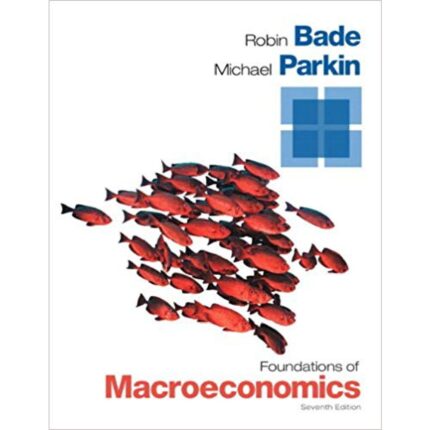PART ONE INTRODUCTION
6
ANSWERS TO PROBLEMS
1. At r = 5%, PV = $100 = $100 = $95.24
(1 + 0.5)1
1.05
At r = 8%, PV = $100 = $92.59
1.08
At r = 10%, PV = $100 = $90.91
1.10
At r = 15%, PV = $100 = $86.96
1.15
At r = 20%, PV = $100 = $83.33
1.20
At r = 25%, PV = $100 = $80.00
1.25
2. At r = 5%, PV = $100 = $100 = $100 = $90.70
(1 + 0.5)2
(1.05)2
1.1025
At r = 8%, PV = $100 = $100 = $85.73
(1.08)2
1.1664
At r = 10%, PV = $100 = $100 = $82.64
(1.10)2
1.21
At r = 15%, PV = $100 = $100 = $75.61
(1.15)2
1.3225
At r = 20%, PV = $100 = $100 = $69.44
(1.20)2
1.44
At r = 25fs%, PV = $100 = $100 = $64
(1.25)2
1.5625
3. PV = $100 + $100 + $800
(1.15)1
(1.15)2
(1.15)2
= $100 + $100 + $800
1.15 1.3225 1.3225
= $86.96 + $75.61 + $604.91
= $767.48
4. At r = 15%, $120 = $104.35
1.15
At r = 20%, $120 = $100.00
1.20
At r = 25%, $120 = $96.00
1.25
At r = 20%, the firm is indifferent between undertaking the advertising campaign
or not because the present value of the return equals the cost. The firm should
undertake the campaign if its rate of discount (r) is lower than 20%, and it should
not if its rate of discount is higher than 20%.
5. Project 1: PV = $100,000 + $100,000 + $100,000 + $100,000
1.10 (1.10)2
(1.10)3
(1.10)4
= $100,000 + $100,000 + $100,000 + $100,000
1.10 1.21 1.331 1.4641
= $316,986.55
Project 2: PV = $75,000 + $75,000 + $75,000 + $75,000
1.10 (1.10)2
(1.10)3
(1.10)4
+ $75,000 + $75,000
(1.10)5
(1.10)6
= $326,644.55
The manager should choose project 2.
6. Project 1: PV = $100,000 + $100,000 + $100,000 + $100,000
1.20 (1.20)2
(1.20)3
(1.20)4
= $258,873.45
Project 2: PV = $249,413.26
Thus, with a discount rate of 20%, the firm should choose project 1.
7. The present value of two investment projects depends on the timing of the receipts and on the
discount rate. At the discount rate of 10%, project 2 has a higher present value. At the
discount rate of 20%, project 1 has a higher present value.
Thus, the decrease in the present value with a higher discount rate is greater for project 2 than
for project 1 because the expected profits from project 2 arise over a longer period of time
than for project 1. That is, the decrease in present value arising from the longer period of time
over which the profits are generated by project 2 is magnified by increasing the discount rate.
8. The explicit costs are $6,000 for tuition, plus $2,000 for the room, plus $1,500 for meals, plus
$500 for books and supplies, for a total of $10,000 per year. The implicit costs are given by
the sum of $15,000 which the student could have earned by getting a job instead of going to
college and the $1,000 of interest foregone on the $10,000 of expenses for one year, for a total
of $16,000.
The total economic cost of attending college for a year by this student equals the sum of its
explicit costs of $10,000 and the implicit costs of $16,000, or $26,000.
9. (a) The explicit costs are $81,000.
(b) The implicit costs are equal to $25,000 (i.e., the entrepreneur’s foregone salary).
(c) The business profit equals total revenue minus the explicit costs, or $120,000 –
$81,000 = $39,000.
(d) The economic profit equals total revenues minus the explicit and implicit costs, or
$120,000 – $106,000 = $14,000.
(e) The normal return on investment equals the implicit costs of the entrepreneur (i.e., her
salary foregone) of $25,000.
10. The statement is generally true. In the course of seeking to maximize profits or the value of the
firm, business supplies the goods and services that society wants the most, provides
employment, and pays taxes. Trying to superimpose on business additional explicit social
responsibility goals on top of profit maximization will interfere with the allocative efficiency
of the free-enterprise system.
It is true that society often wants to modify the operation of the economic system so as to
achieve some explicit social goal (such as reducing the overall level of unemployment, hiring
the handicapped, controlling pollution, etc.). But this can best be achieved through government
regulations and incentives. Business can best contribute to the welfare of society if it is left to
do what it does best—that is, to maximize profits.
As Adam Smith pointed out more than two centuries ago with his celebrated discussion of the
invisible hand, when each individual (and manager) is left to pursue his own selfish aims, he
also, and at the same time, promotes the welfare of society much more than he believes he
does.
11. In attending college the student incurs explicit and implicit costs. The explicit costs include
tuition and the expenditures for room, meals, and books and supplies. The implicit costs
include the salary foregone by attending college rather than getting a job, plus the interest
foregone on the explicit costs for one-half a year (on the assumption that the explicit
expenditures for each semester are incurred at the beginning of the semester).
Aside from the psychic benefit of attending college, a college education will also result in a
larger expected future stream of income over the working life of the college graduate.
Thus, the decision to attend college can be evaluated as any other investment decision, in terms
of its benefits and costs. Using this method it was estimated that the return to a college
education was about 10 percent to 15 percent per year during the 1950s and 1960s.
Since the early 1970s and as a result of sharp increases in tuition and relatively lower starting
salaries, the return to a college education declined to about 7 to 8 percent per year. This is
lower than on similarly risky investments. It must be pointed out, however, that part of what
was considered the cost of attending college may in fact be regarded as consumption. When
this is considered, the return on attending college may still be higher than on similarly risky
ventures.
12. Computer firms remain in the industry even in the face of declining profits because they hope
that they can make more profits in the future (as Dell has done in previous years) and the
computer industry is the industry they know best. Over the years many computer companies
have, indeed exited the industry or have discontinued making some computers (such as IBM
dropping desktop computers in 2001).
13. See: http://www.fortune.com/companies, at the beginning of 2006 and 2007. The vast majority
of the most admired global companies are likely to be American (as in previous years).













Reviews
There are no reviews yet.